The Colosseum. It’s one of those things in Rome you’re “supposed” to do, but to be honest I wasn’t really looking forward to it that much. I was sure it would be fine, and I had booked the “Underground Colosseum” tour based off rave reviews online, but I definitely didn’t think I’d look back on it as the highlight of my time in Rome.
It was, and I do.
I took the bus from my hotel near Piazza Navona to the Colosseum. I figured it out all by myself! (Didn’t go so well on the way back – I couldn’t even figure out which bus was which – but walking through Rome is always pleasant, anyway). Its really odd to be in the middle of a city, turn around and see 2000 year old structures sitting right next to modern apartment buildings, offices and stores. Perhaps its something you get used to after being in Europe for a while, but my first sight of the Colosseum was a bit staggering.

It was pretty early in the morning; I had a 9:30am tour and wanted to get there beforehand to take pictures on my own before the crowds started. As we’ve established in previous posts, I hate crowds.
I had bought the Roma Pass, so my first two sites were “free”. A month before my trip I had called to book the Underground Tour (which is a surcharge on top of regular admission or the Roma Pass, either one), so I checked in at the tour desk, presented my Roma Pass and got meet-up instructions for the tour before walking into the Colosseum to do some pre-tour exploration.
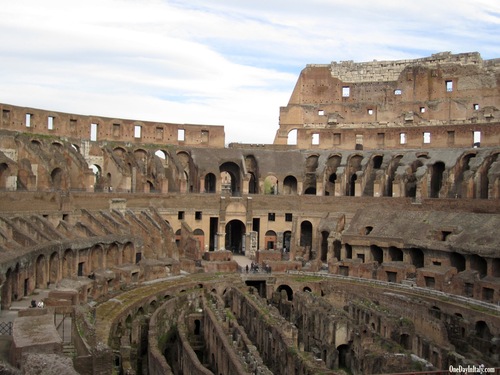
The “Underground Tour” supposedly takes you underneath the public areas of the Colosseum. I was envisioning walking through these ancient hallways on the floor of the arena, but with the grass on the bottom looking very un-trampled I was starting to doubt that would be the case.
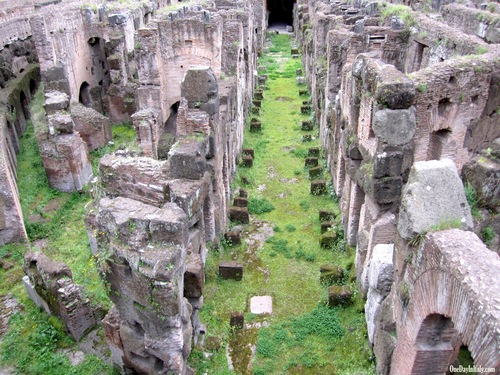
My attempt to avoid crowds worked, though the Colosseum is so large I’m not sure how crowded it actually ever gets. This morning, though, I only saw a handful of people strolling about.
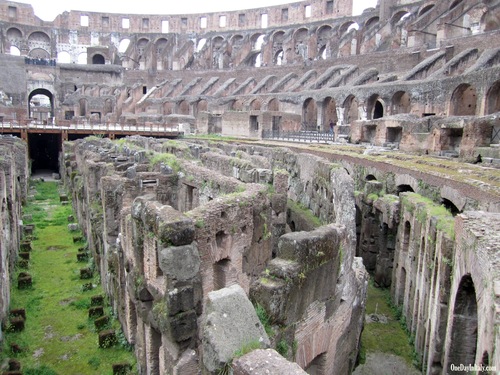
Right before 9:30am I walked over to the group tour meeting area. My tour of the Vatican Museum the day before had had 44 people in it – it was awful – so I was a bit nervous about this one.
After a few minutes this young guy walked up with headsets and introduced himself as our tour-guide, Michele. There were only 12 of us for the English-speaking tour (thank goodness!), but the headsets would assure that we wouldn’t have to cram in to hear him well. No pre-recorded messages, just voice amplification.
The first stop on the tour were the underground corridors where the animals had been kept.
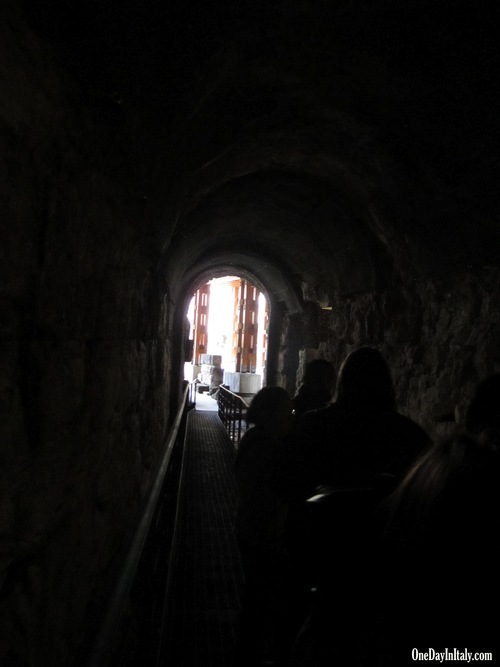
To be honest, being at the Colosseum made me think how much I really didn’t know about what went on there and when. I had assumed certain things from movies and heresy, but while listening to Michele start to speak I realized I didn’t actually know if any of it was historically accurate.
The Colosseum was originally known as the Flavian Ampitheatre, after the two Flavian Emperors who oversaw its construction: Vespasian began building it in 72AD and Titus finished it in 80AD. It was used for a wide variety of entertainment, not just gladiator fights. They put on mythological plays, faux naval battles, animal fights, gladiator fights and battle reenactments, as well as holding executions there.
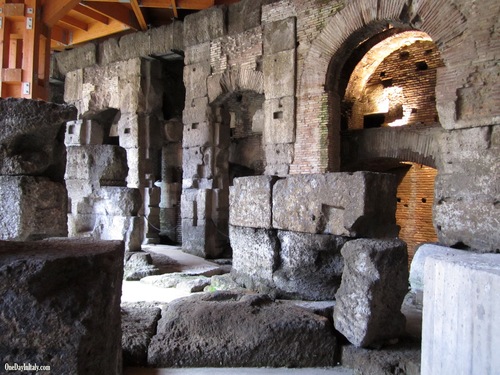
Underneath the public areas of the Colosseum wind dozens and dozens of tunnels, all with entrances leading toward the center.
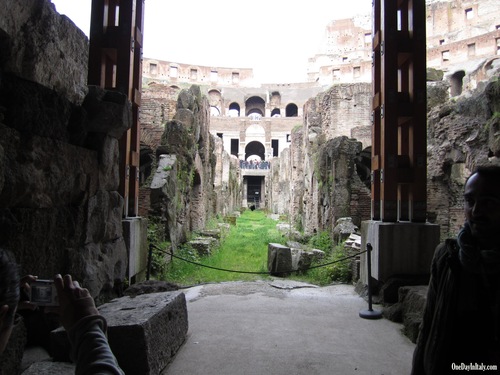
The largest corridor, corridor “H”, runs lengthwise down the center of the center of the Colosseum. These corridors had to fit not only animals in cages but also scenery that would be raised up through the stage floor for the dramatizations: fake mountains and forests, fake sand dunes and the like.
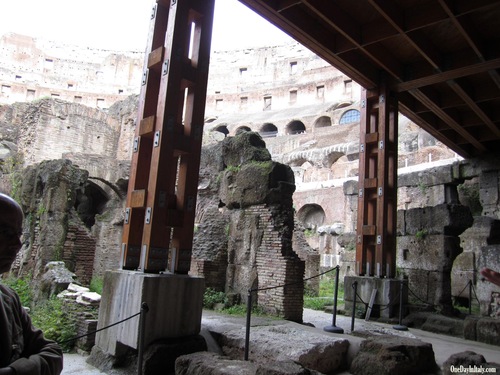
We’re so used to seeing down into the ruins of these hallways, I’m not sure I had realized before this that there used to be a stage constructed over top of them. Recently they reconstructed a portion of the stage on one end of the arena, though I doubt they used steel beams at the beginning of the millenium (and by “recently” I mean sometime in the past century – I have no idea when exactly they put it up). The original stage was made of wood and was covered with a layer of “harena” (from where we get the word “arena”), a type of fine sand that soaked up the blood of the competitors, human or animal.
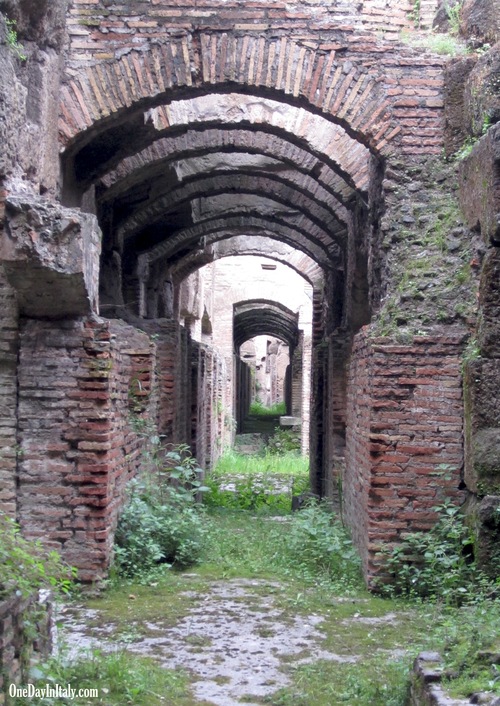
Call it silly, but the view down this hallway with its complete arches and patches of grass made me think of some sort of secret garden through which ancient peoples used to travel to do their daily errands and children would skip around playing hide and seek. It gave me a very enchanted, lighthearted feeling.
In reality, though, these hallways were closed in by the stage above, dark, probably dank, and traversed by slaves pushing lion cages and gladiators on their way to fight to the death. Not as pretty of a picture, by far.
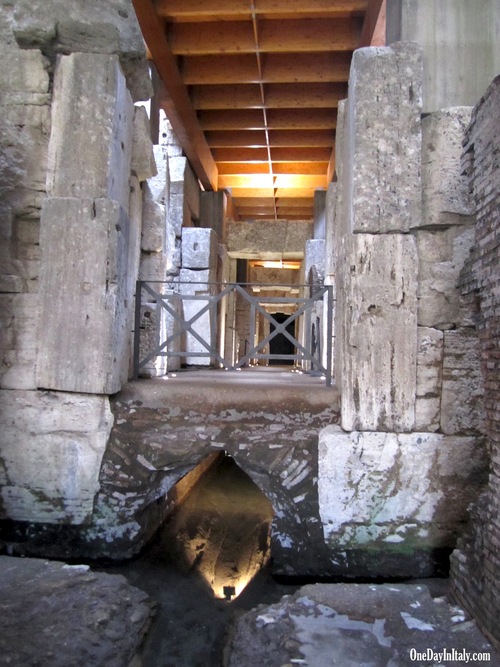
Those gladiators came through this hallway under the arena from their barracks. The largest, and the one this hallway leads to, was the Ludus Magnus. I didn’t know it at the time, but supposedly you can visit the Ludus Magnus with an appointment! (totally on my list for my next visit to Rome!)
Underneath the hallway there’s a large hole, the like of which appear all over the arena. It looks like a drain, and it was…after Domitian built the corridors under the stage between 80-96AD. Before then it was actually used to FILL the arena with water for mock naval battles. Who knew, right?
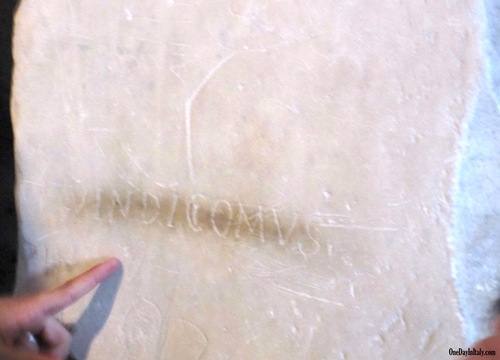
This is a marble slab from the Ludus Magnus, a partial wall from one of the gladiator cells. It seems that gladiators would write on the cell walls the same way we see prisoners in the movies doing now. This partially-legible name was etched by one such before he fought to the death in the Colosseum, as was the sketch of a fighter below.
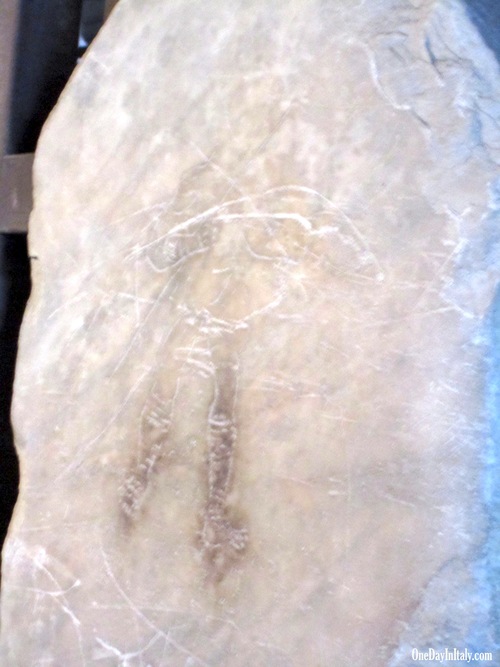
I think it’s quite good, don’t you?? Etching is a lot harder than drawing, and I doubt I could even DRAW that well!
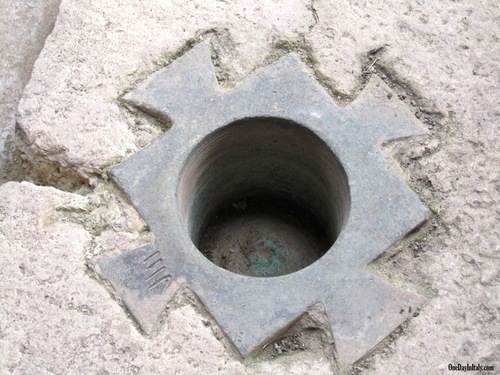
This is the remnant of a winch. They used the winches to raise the animals, gladiators, scenary, etc from the underground levels to the stage. There were forty winches in all and it took 6 slaves to operate each winch.
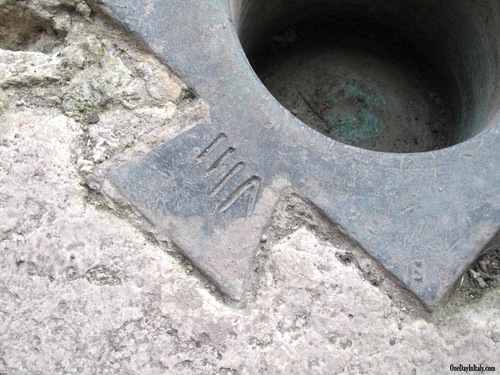
The historians at the Colosseum believe that there was a sort of “stage director” for every event who would call out the number of the winch that should be raised or lowered. This winch was number “8”. Excuse me, “VIII”.
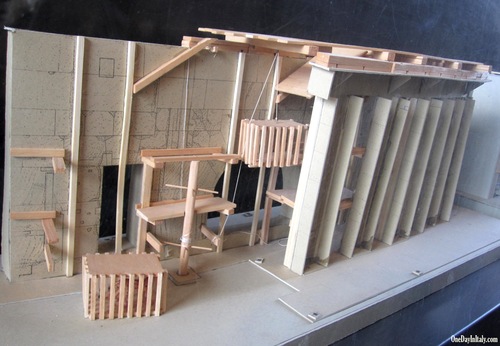
There are two models explaining how the winches worked to raise and lower parts of the stage, lift up animal cages, props and gladiators for a surprise entrance that must’ve seemed like magic to the spectators as things suddenly appeared in a cloud of sand and dust. This model shows the basic concept: as the stage lowered powered by one winch, another winch would raise the animal cage to slide onto the lowered platform, which would then be raised back into place.
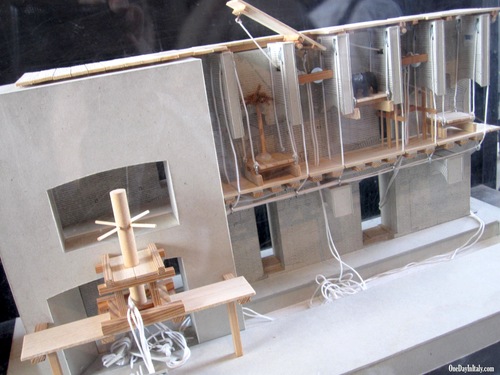
And this one shows how incredibly complicated it could get. Things being raised, lowered, put back, all over the place. Crazy!
Michele stopped after each explanation and made sure no one had any questions. He was *amazing*! When someone had a question, he stopped for as long as needed to answer it and any follow-ups. He was knowledgable, considerate and easy-going: the perfect guide!
After going over everything that happened on this side of the “curtain”, Michele took us up into the public area of the arena and then up even higher into a blocked off corridor high above the general walkways. Read Part 2 HERE
Comments
comments












Leave a Reply